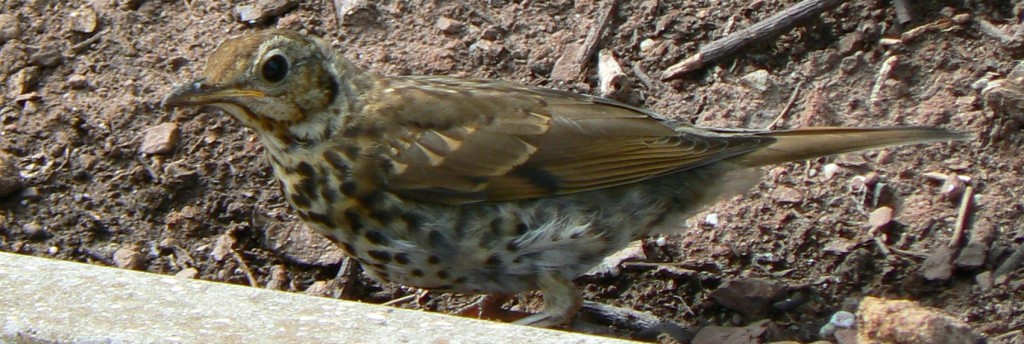
[348] Turdus philomelos, Song Thrush
Introduction
Although not now very common, Turdus philomelos, is the most common type of thrush seen in Britain and is often called just a Thrush. Its more formal name is the Song Thrush but the sounds it makes are probably the most unexciting of our singing birds.
I will also look briefly at our other resident and visiting thrushes – apart from [347] the Blackbird, considered yesterday.
Taxonomy
Kingdom – Animals
Phylum – Chordates
Class – Aves (Birds)
Order – Passeriformes
Family – Turdidae
Genus – Turdus
Scientific Name – Turdus philomelos
Name
We saw the words thrush and turdus yesterday. You can see my thoughts about its song below. Throstle is an archaic form of Thrush.
Philomenos refers to the character Philomela in Greek mythology (from Greek philo-melos, loving-song,) who had her tongue cut out and was transformed into a singing bird.
Description
Although both are within the genus Turdus, the Song Thrush and Blackbird are not very close relatives. I would have described the Song Thrush as slightly larger than a Blackbird but they are actually slightly smaller. They have dark brown backs and very light cream underparts with very marked chevron-shaped spots (Like inverted ‘V’ shapes.)


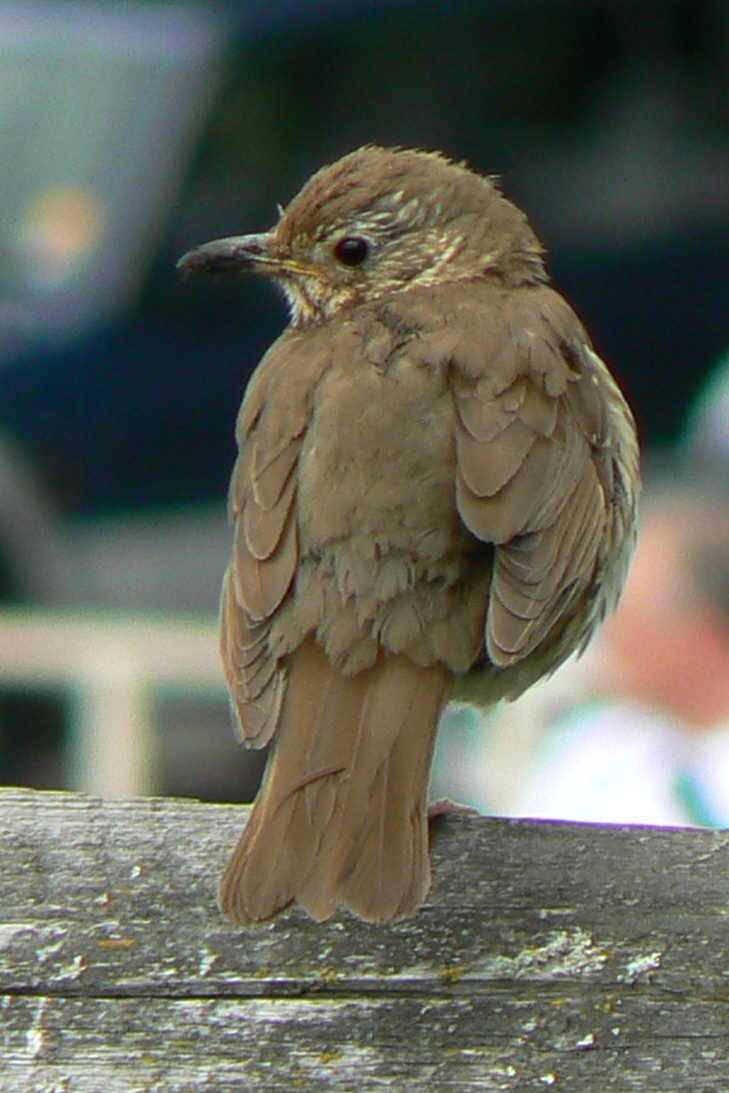
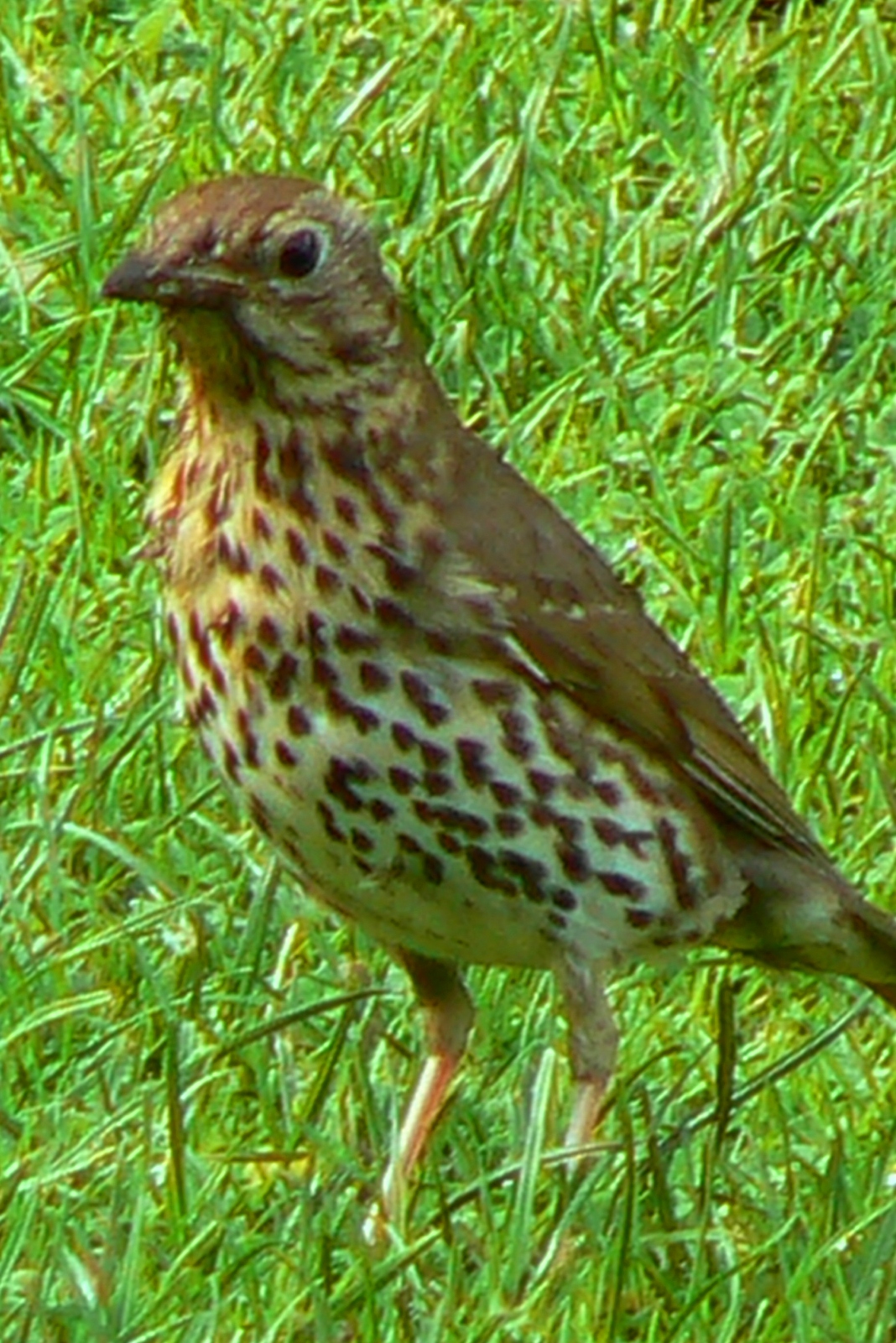
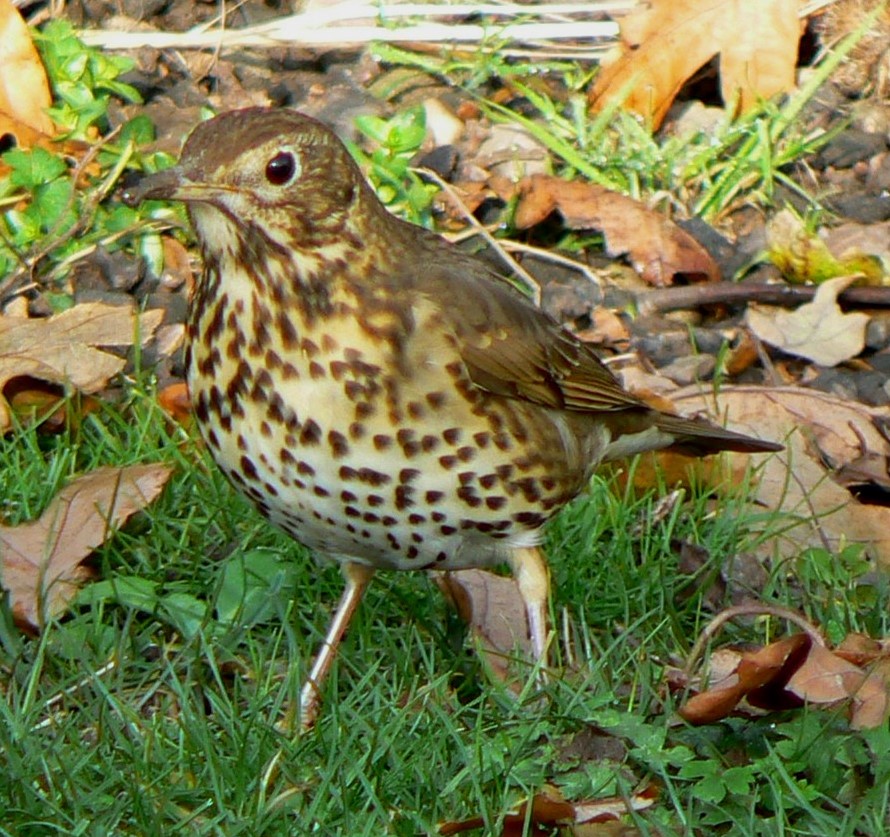
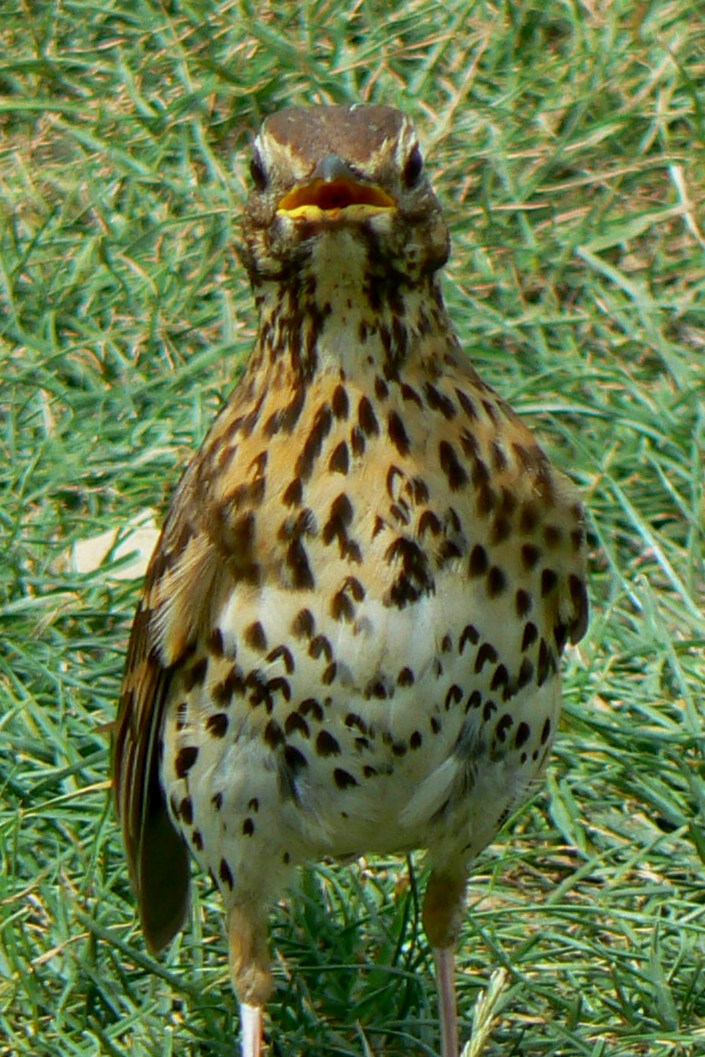
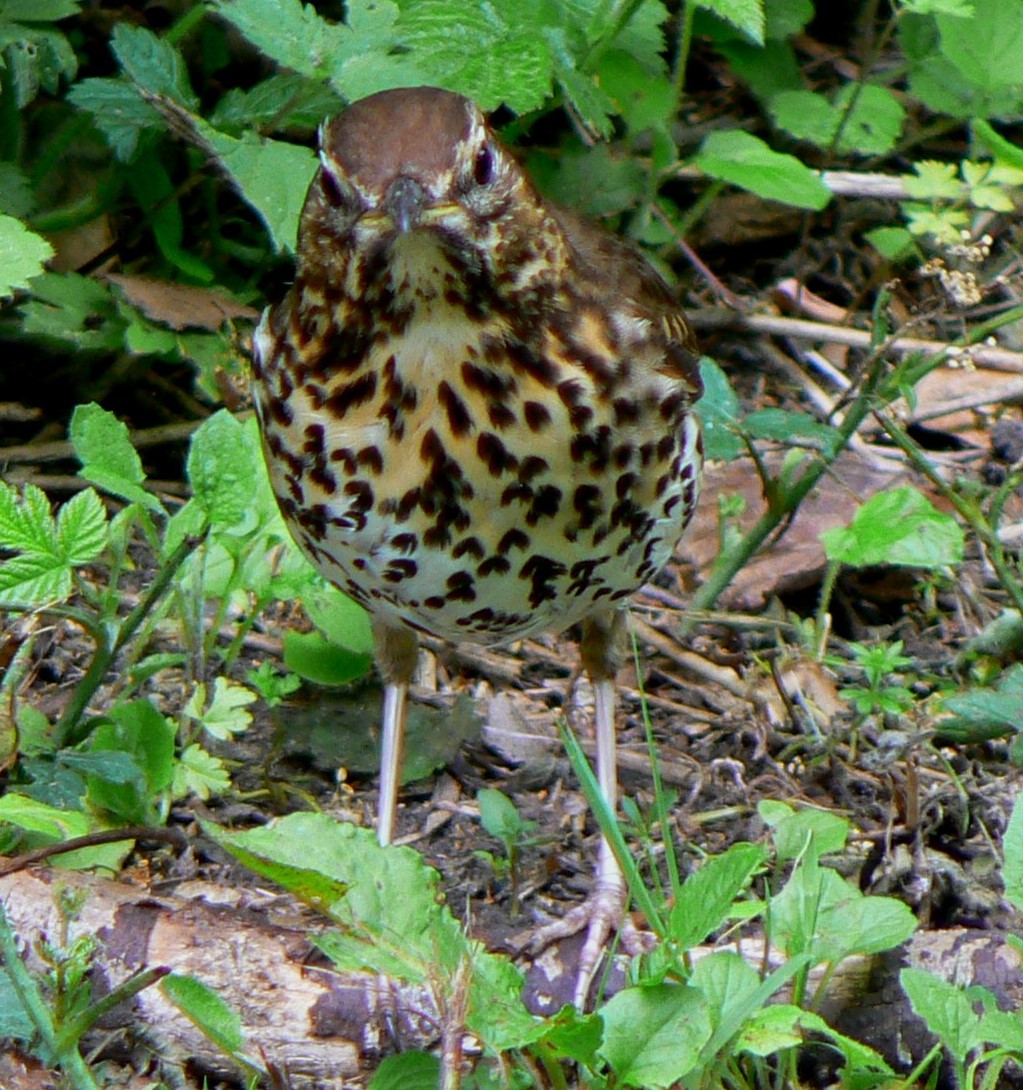
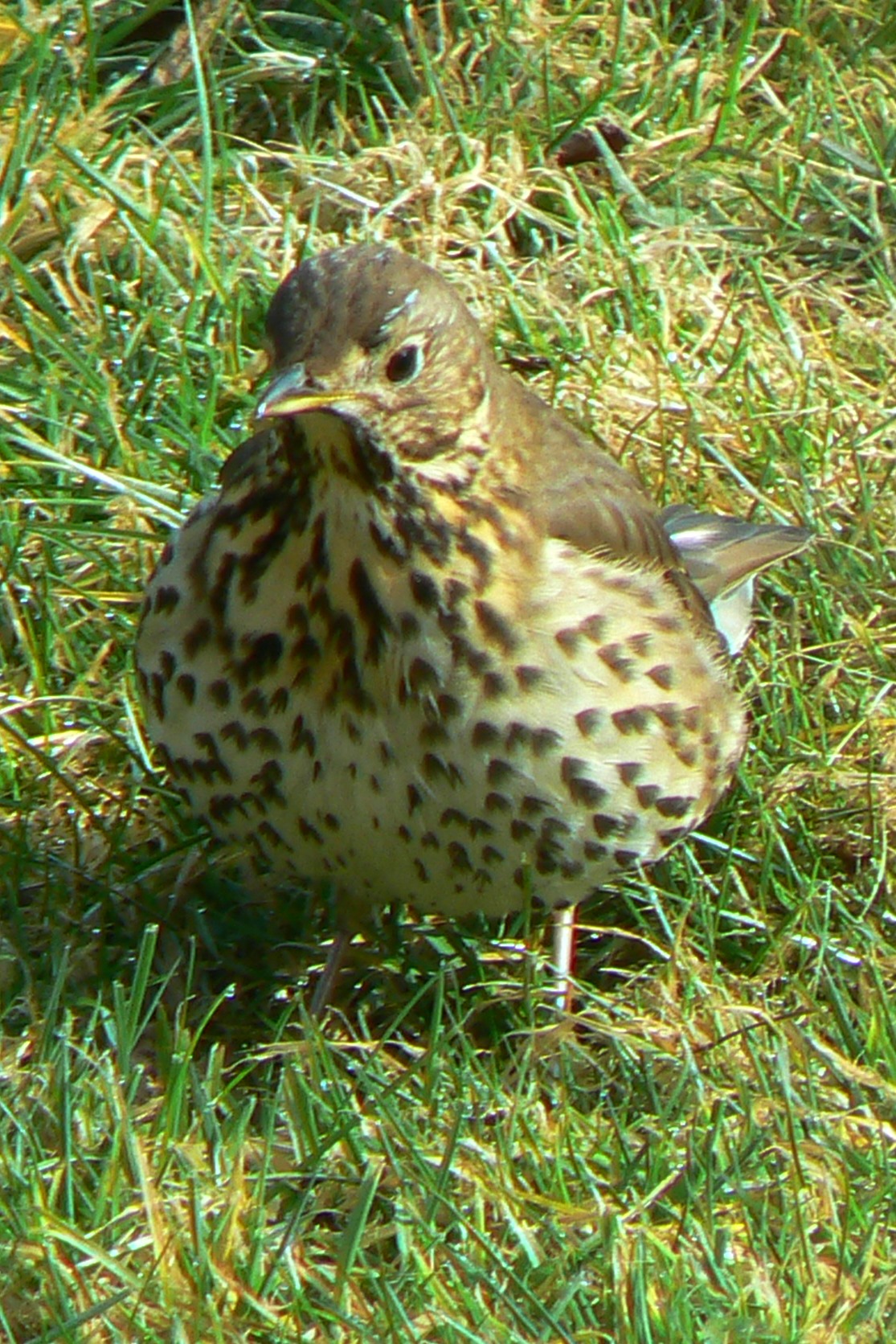
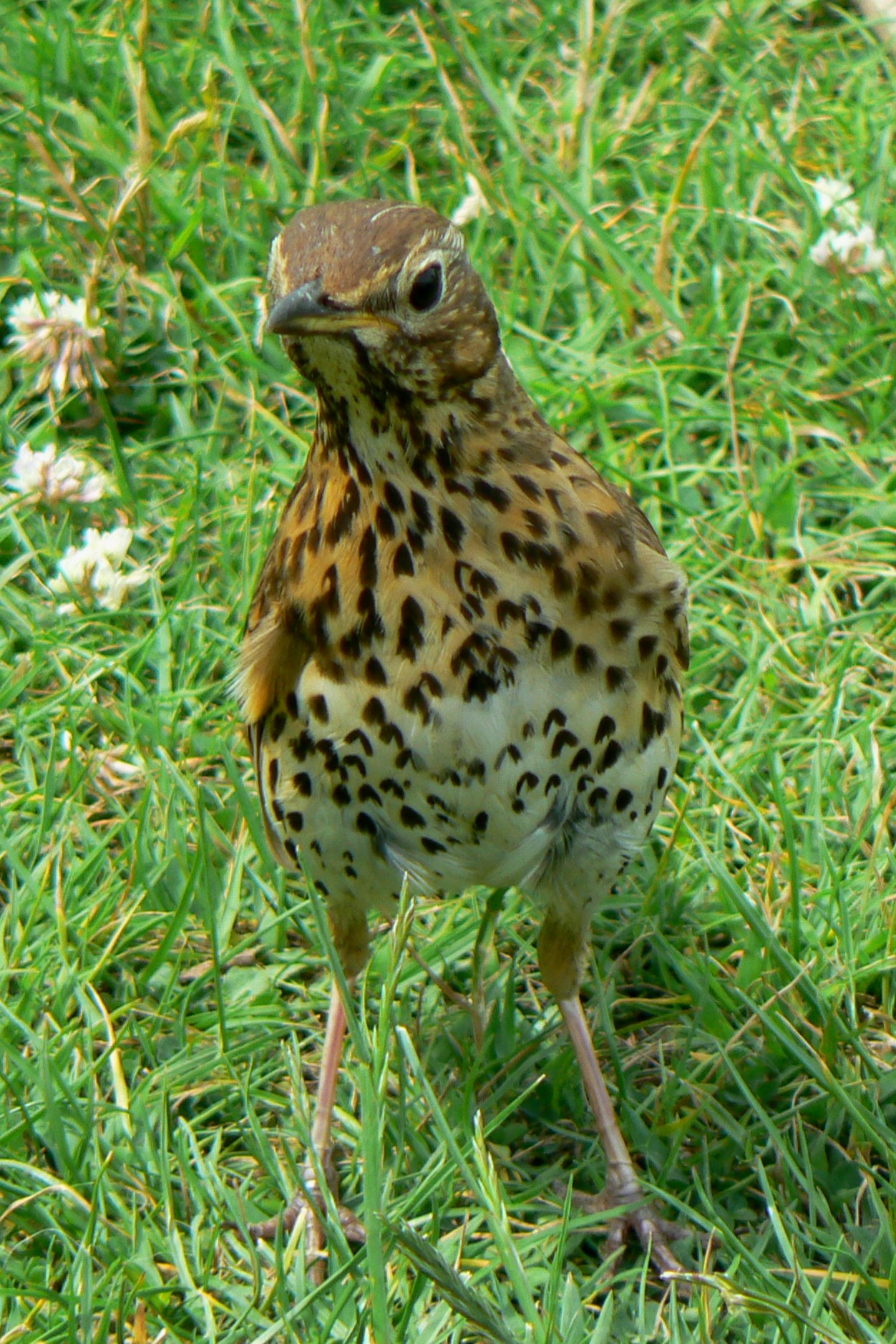
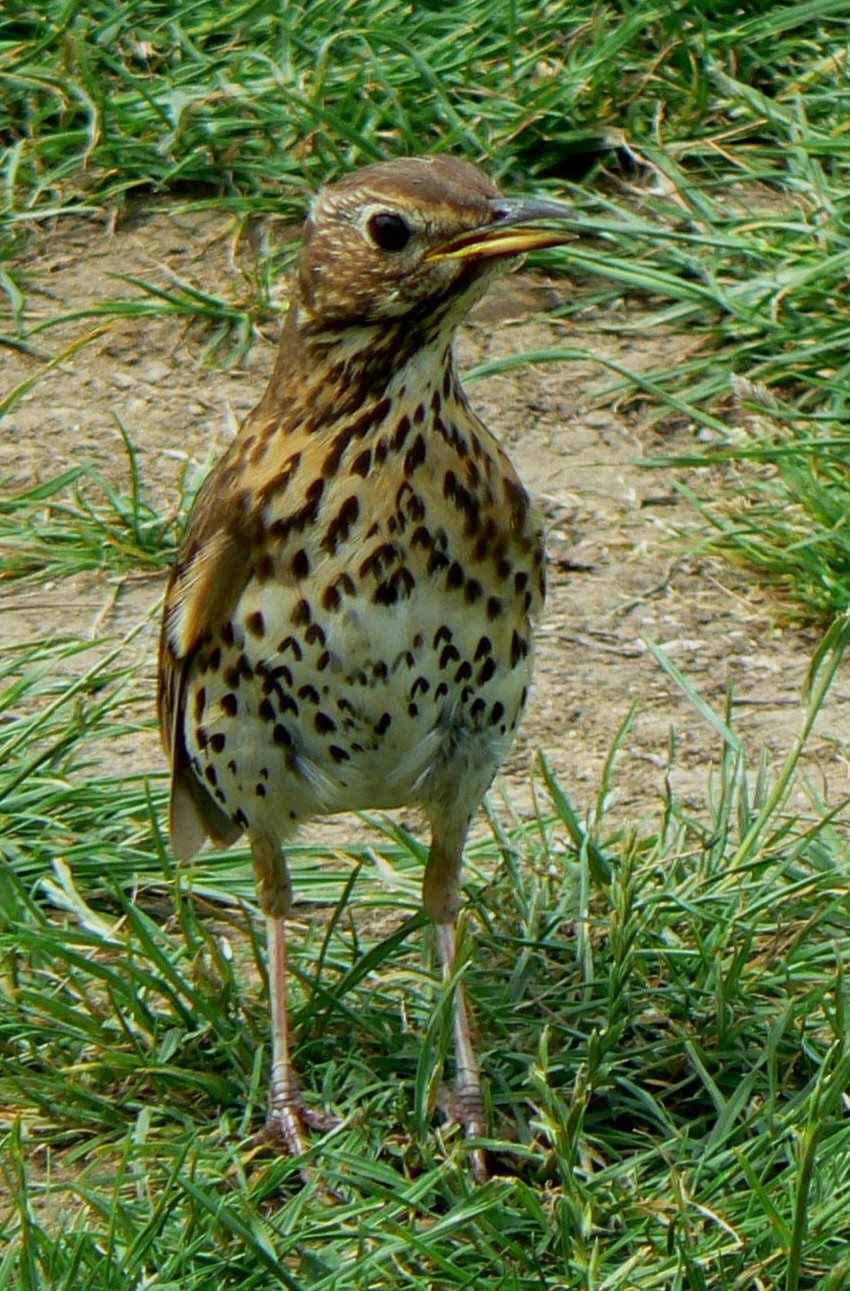
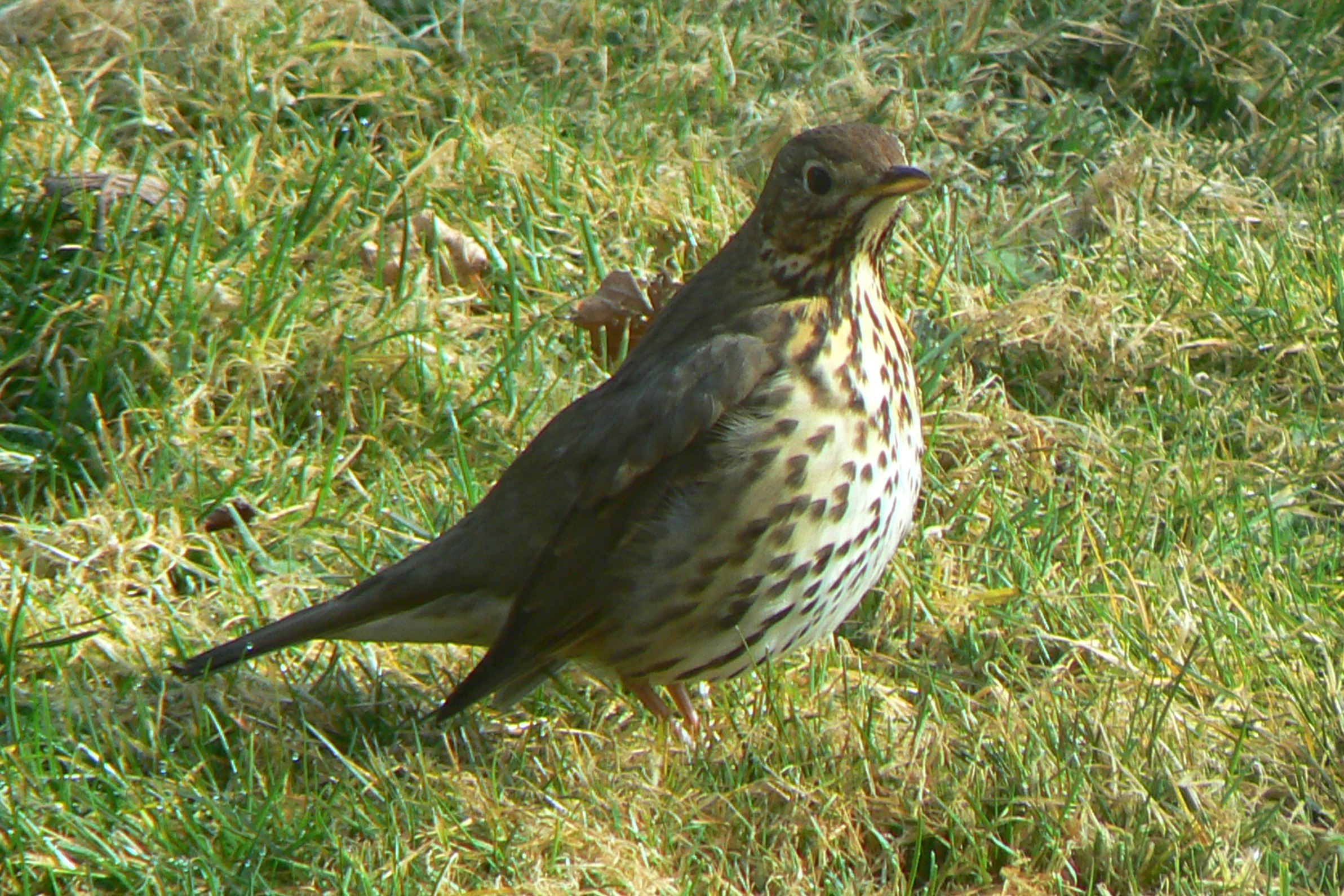
The Song Thrush is omnivorous and may have a favourite stone that it uses as an anvil to break the shells of [172] Snails. They are also known to drop snails on to metalled road surfaces. As well as snails and worms, they may eat soft fruit and berries. They make typical nests in trees or bushes.
This bird has declined in numbers in recent years – due to changes in farming and a reduction of hedgerows; the use of poison bait to control slugs and snails; and the dangers of traffic when smashing snails on roads.
Song
I am not sure that many people would agree with me but I don’t think the sounds that the Song Thrush makes are good enough to be called songs. They may just about qualify as birdsong because it’s a bit more than the basic warning calls that many birds make. I don’t see it as melodious and it’s not as tuneful as a Blackbird, Robin, Dunnock or just about any of our other garden birds. I would describe it as follows.
- Sing one, two or three notes fairly quickly. They may vary in tone and length.
- After a gap, repeat exactly the same pattern as 1. above, normally for three repetitions but sometimes two or four.
- Go back to 1., but make a different random choice, them keep looping.
It may not be exciting but it one of the easiest birds to recognize from its sounds.
There are several references to the song of the Song Thrush in English poetry.
Habitat
The range of the Song Thrush covers most of Europe apart from the extreme east and north. In some areas it is migratory but it is resident over all of England and Wales. It is a summer visitor in Scotland.
It breeds in woods, parks and gardens.
Other Notes
Some of these pictures come from my back garden but from several years ago. More recently, the Song Thrush is becoming very rare in towns. In the last few years, I have heard one more often than I have seen one.
See also
Other species of Turdus seen in the UK.
- Turdus viscivorus, Mistle Thrush. This bird is significantly larger and its spots are round, not chevron-shaped. Its back and neck are grey in parts rather than brown. They may be seen in large parks but are seen much less often in gardens and urban environments than Song Thrushes. It has a habit of standing up straight, somewhat reminiscent of the pose of a mongoose. It tends to eat more fruit and you can read more about it in [360] Mistletoe. Its song, which can include some mimicry of other birds, is much more like the song of a Blackbird than a Song Thrush.
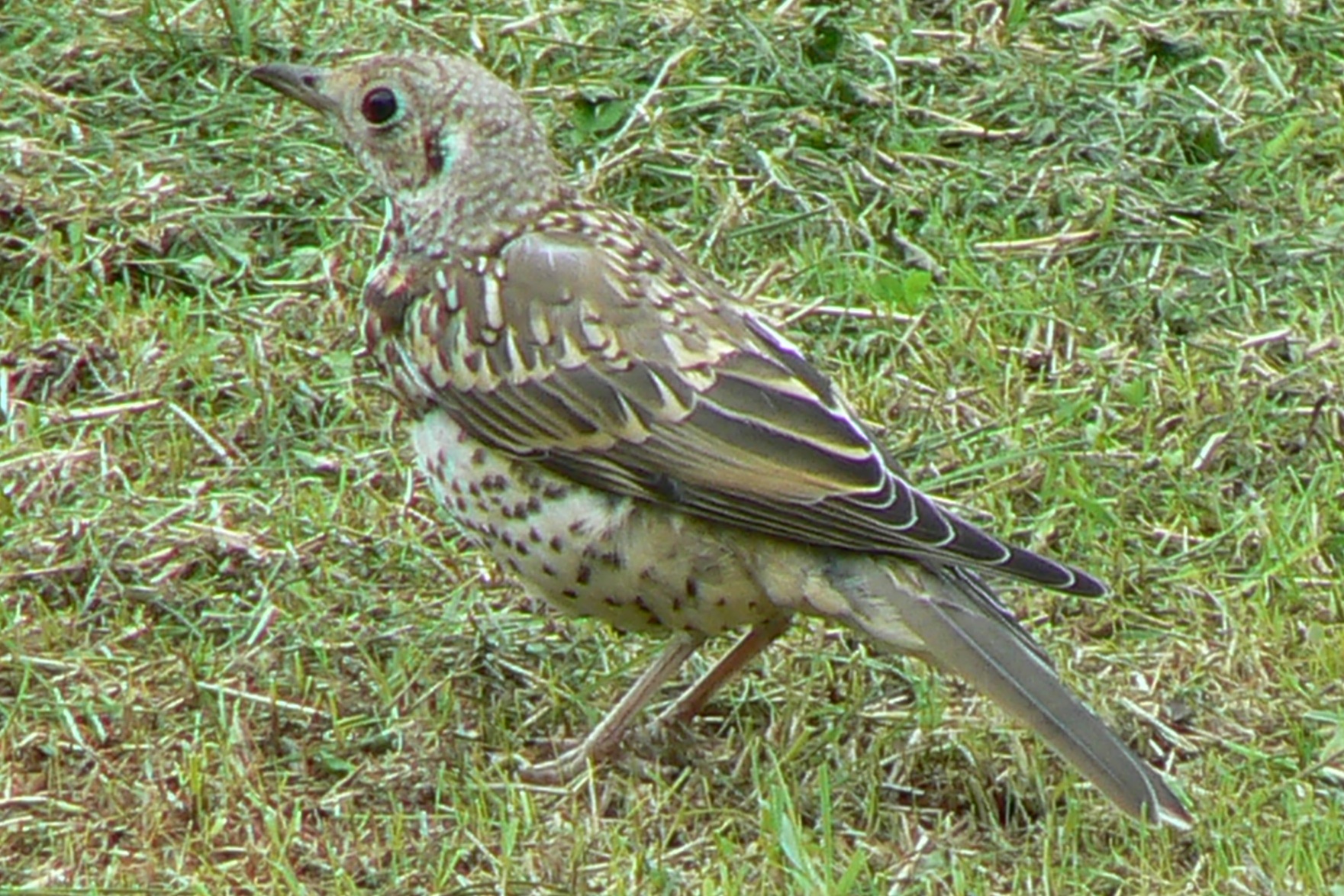


- Turdus torquatus, Ring Ouzel. The male is like a Blackbird with a white half-collar at the front. A rare summer breeding visitor to a few mountainous locations in Wales, Scotland and Northern England. May be seen as a passage migrant on the way.
- Turdus pilaris, Fieldfare. Somewhat like a Mistle Thrush with a more reddish back and bluish-grey head and neck. Only seen in Britain as winter visitors where they form large flocks and may be seen in farmland or at the tops of trees. Very wary of people.
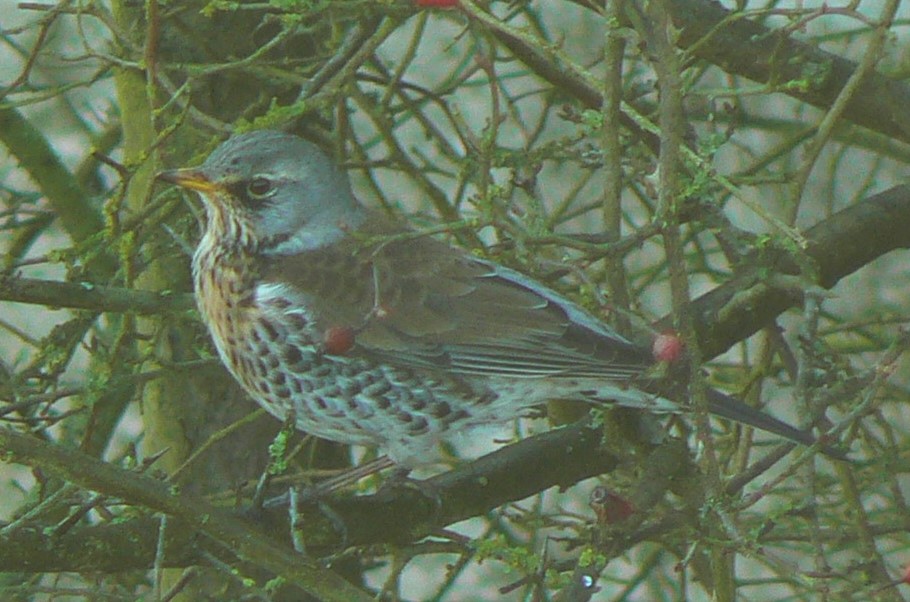
- Turdus iliacus, Redwing. Smaller and rounder than our native thrushes with red-brown under the wings. As for Fieldfare and often forming mixed flocks.
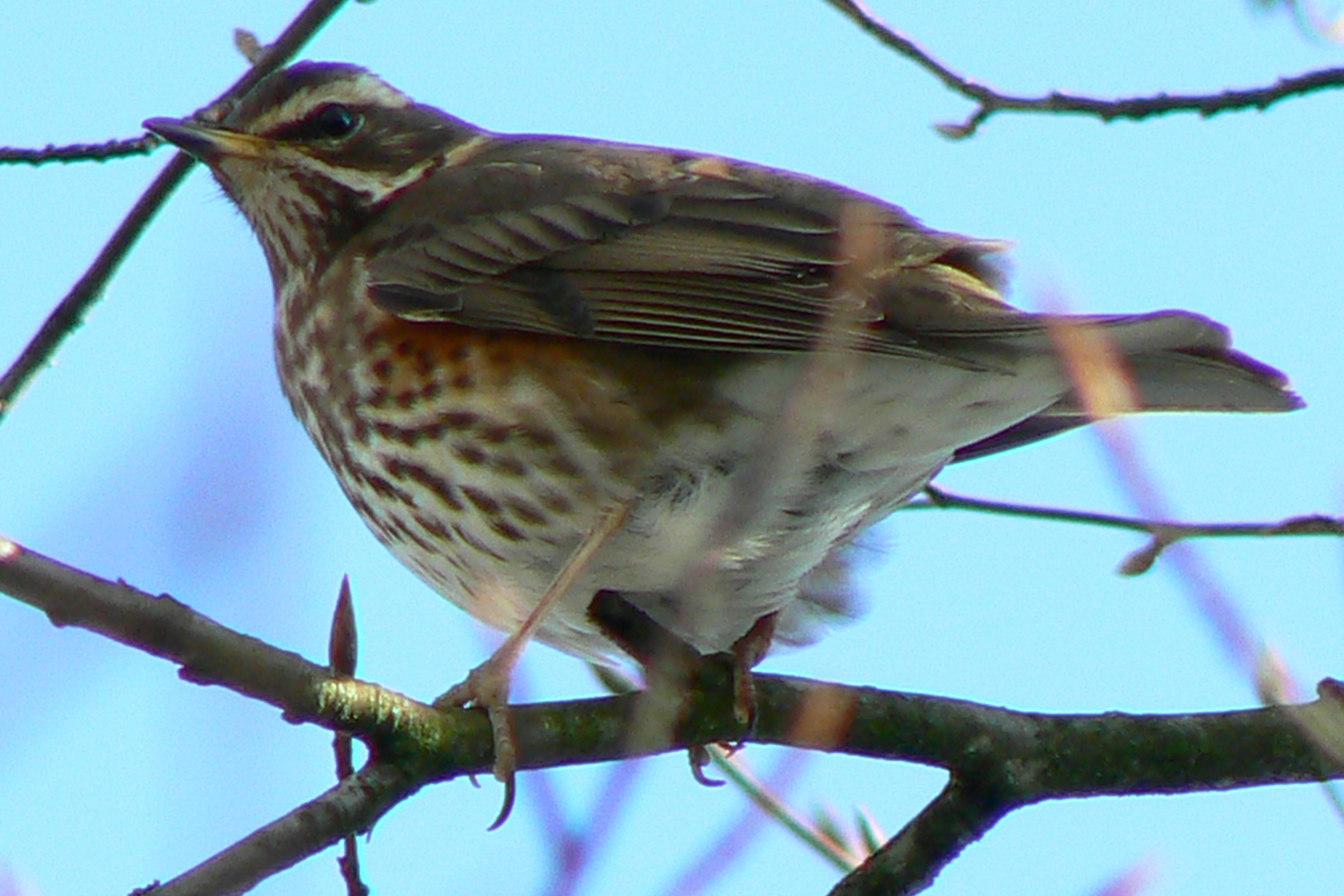
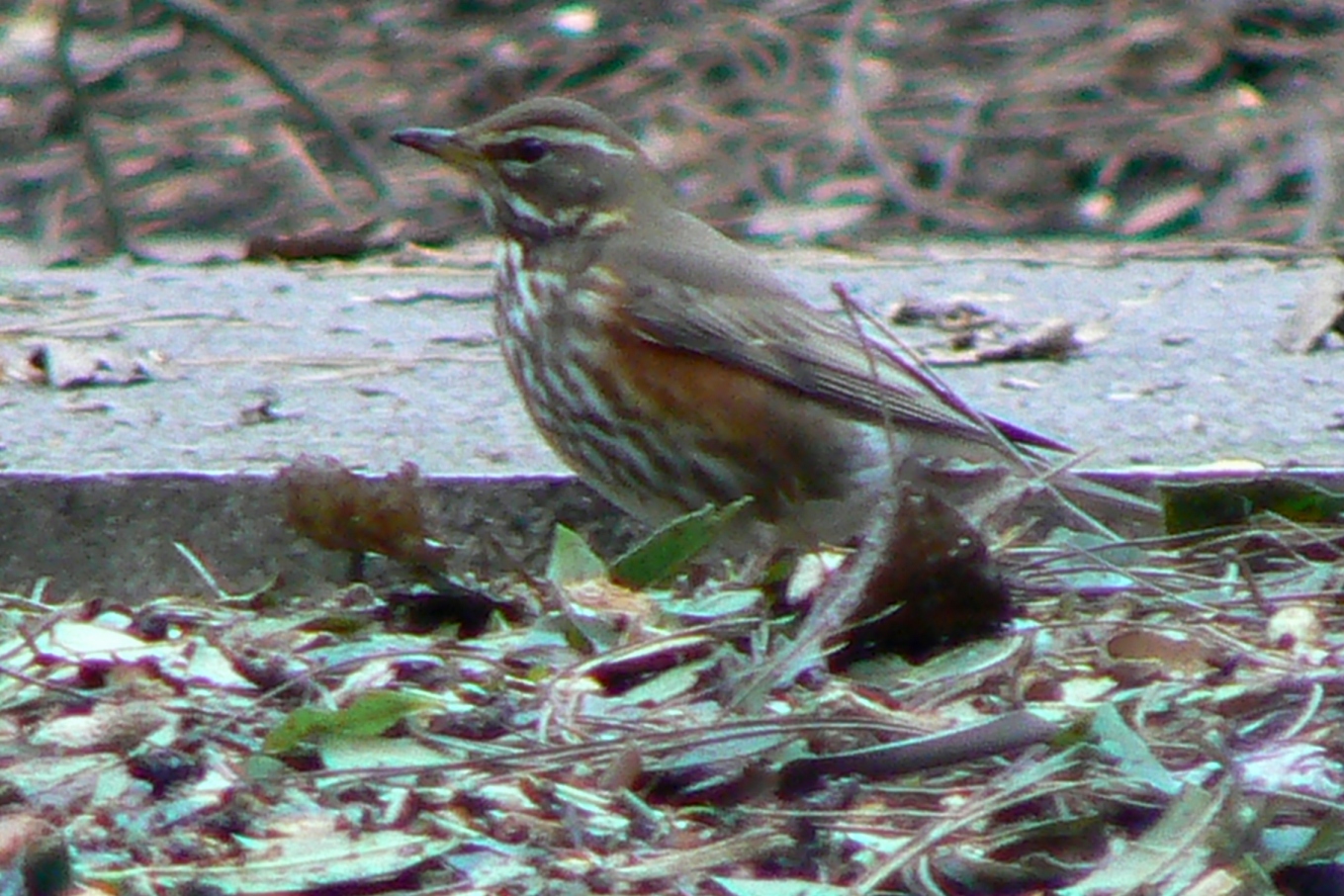
We only have one more bird species to come so I will mention some more small passerine (Passeriformes) birds that have escaped us. There are some fairly rare winter or summer visitors such as Waxwings and Flycatchers. But the main one to escape us is the Wren.
Troglodytes troglodytes, Wren
It’s almost our smallest bird. (There are one or two smaller birds that you will probably never see.)
It’s very common but tends to hide in the undergrowth. You will know what it looks like if you are old enough to remember the farthing coin. (They were withdrawn in 1961.) It’s small and brown. It may fly across your path between trees a few inches above the ground. If you learn to identify birdsongs, the song of the Wren is the easiest to identify, it is one of the loudest and you will hear it often.
